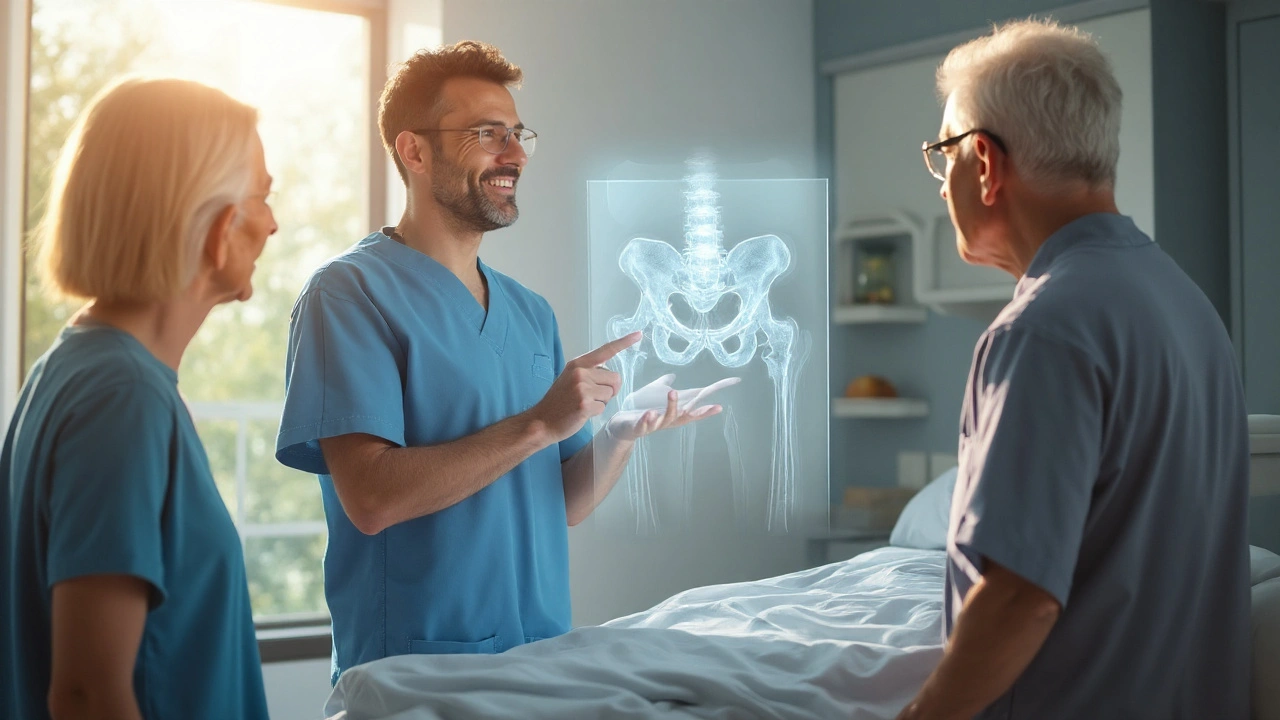Osteoarthritis (OA) is the most common type of arthritis. It happens when the cartilage that cushions your bones wears down over time. When that cushion thins, bones rub together, causing pain, stiffness, and sometimes swelling. OA can affect any joint, but it shows up most often in the knees, hips, hands, and spine.
Most people first notice a dull ache after a long walk or after sitting in one position for a while. The pain often gets worse with activity and eases with rest. Stiffness is another early clue—it usually lasts less than 30 minutes in the morning and improves as you move. You might also feel a grinding or cracking sensation when you bend a joint. If the joint looks swollen or feels warm, inflammation is adding to the discomfort.
These symptoms don’t always mean OA, but if they persist for a few weeks, it’s worth getting a check‑up. A doctor can confirm the diagnosis with a physical exam and an X‑ray that shows joint space narrowing or bone spurs.
Managing OA is about reducing pain, keeping joints flexible, and slowing further damage. The first step is to stay active. Low‑impact activities like walking, swimming, or cycling keep the muscles around the joint strong without over‑loading the cartilage. Aim for 30 minutes most days, and break it up if that feels easier.
Weight control is another powerful tool. Even a few pounds off can lower the pressure on knee and hip joints, which often translates into less pain. Pair a balanced diet with regular movement for the best results.
When pain flares, over‑the‑counter pain relievers such as ibuprofen or acetaminophen can help. Use them as directed and talk to a pharmacist if you have other health conditions. Topical creams with menthol or capsaicin also give quick, localized relief.
Physical therapy provides tailored exercises that improve range of motion and strengthen supportive muscles. A therapist can teach you safe stretching routines and how to use assistive devices like a cane if needed.
In some cases, doctors recommend prescription medications, such as topical NSAIDs, oral steroids, or hyaluronic acid injections. These options target inflammation directly and can give longer‑lasting relief.
Finally, protect your joints during everyday tasks. Use a raised toilet seat, avoid kneeling on hard surfaces, and consider ergonomic tools for gardening or housework. Small adjustments add up to less strain on painful joints.
Osteoarthritis doesn’t have a cure, but with the right mix of activity, weight management, medication, and joint protection you can stay mobile and enjoy daily life. If you’re unsure where to start, schedule a visit with a primary‑care doctor or a rheumatologist—they’ll help you build a plan that fits your lifestyle and pain level.

Learn what osteoarthritis means, when joint replacement is needed, and how to prepare, undergo, and recover from hip or knee surgery.
read more